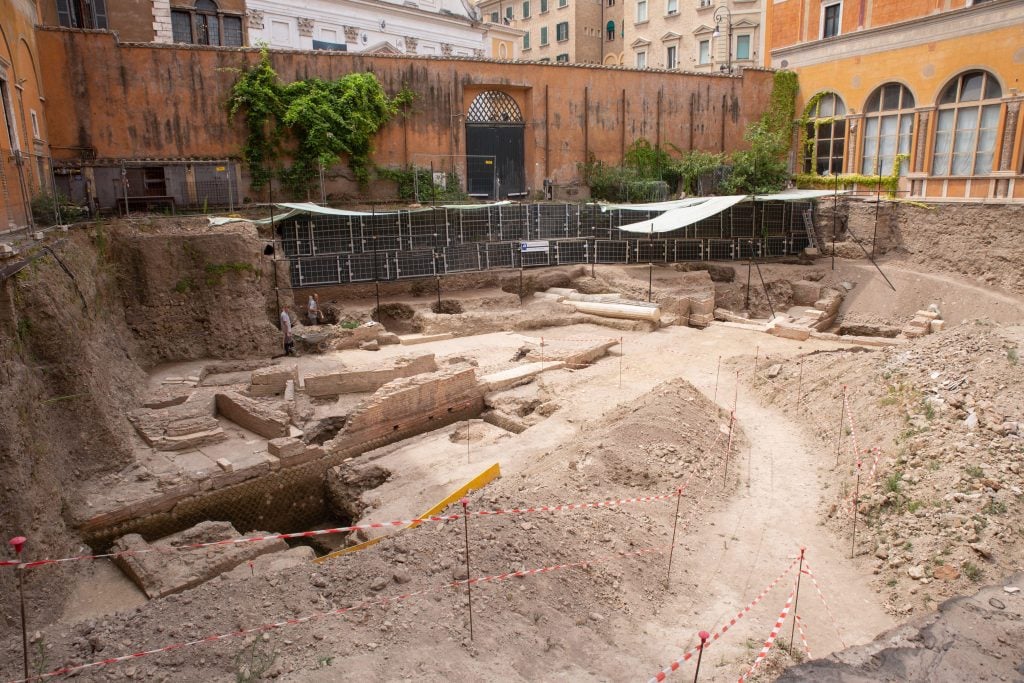Archaeology & History
Archaeologists Have Uncovered the Remains of Roman Emperor Nero’s Infamous Theater Beneath the Courtyard of an Italian Palazzo
The excavations also yielded artifacts from colored glass goblets to pottery vessels.

The excavations also yielded artifacts from colored glass goblets to pottery vessels.

Artnet News

Archaeologists excavating a Renaissance building in Rome, Italy, have discovered the remains of Nero’s Theater, an imperial structure that has been described in ancient Roman texts, but never located.
Since 2020, researchers from the Special Superintendence of Rome have been digging in the courtyard of the Palazzo della Rovere in the run-up to a renovation. The building, mere steps from the Vatican, houses the Equestrian Order of the Holy Sepulchre of Jerusalem, which has leased the space to the Four Seasons, due to open in 2025.
The team uncovered structures, including rare African marble columns, stucco walls painted with gold leaf, and storage rooms, mirroring descriptions of the theater where the Roman emperor rehearsed his poetic and musical performances.
“The size of the building, the beauty of the decorations and the materials used suggest an imperial commission, so we can presume that it is Nero’s theater, just as Pliny, Suetonius, and Tacitus had described it,” said Alessio De Cristofaro, one of the team’s archaeologists, in a statement.
Nero ruled the Roman Empire from 54 to 68 C.E., during which time he erected the theater to reflect his status as a powerful ruler and lover of the arts. Most of our extant descriptions of the structure come from chroniclers Suetonius, Tacitus, and Pliny the Elder, the latter of whom wrote that the theater was “large enough to satisfy even Nero’s desire to sing before a full house.”
Tacitus’s writings further suggest that Nero sang at the theater during the Ludi Juvenales scenic games, and more notoriously, watched Rome burn from its vantage point in 64 C.E.
The excavation also yielded a trove of other ancient Roman finds dating back to the 10th century, from colored glass goblets to pottery vessels to animal bones that were fashioned into combs and musical instruments. Personal objects such as rosary beads and bronze amulets were also found and could be related to pilgrimage.
These artifacts are considered “exceptional,” said Leonardo Visconti di Modrone, the governor general of the Vatican order, as objects from this chapter of Roman history rarely turn up. Marzia Di Mento, the lead archaeologist, additionally noted that only seven glass chalices from the era have ever been discovered.
According to officials, the portable artifacts will be moved to a museum, with some of the best-preserved objects intended for a showcase within the upcoming hotel. The ruins of the theater will be reburied once studies are completed.
More Trending Stories: